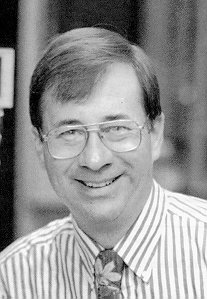FROM ALICE…
… TO BOB
Some interesting things about Alice go here, along with perhaps a picture?

Welcome to the website QCA2B, supporting our book Quantum Computing: From Alice to Bob (Oxford University Press, 2022). A bit about my background: I grew up in a rural area of southeastern Pennsylvania. My love of science received a big boost from our school’s chemistry teacher Mr. Samuel P. Darby, the only African-American teacher in the entire school district. After a career in the chemical industry, Mr. Darby turned to teaching. He showed us that science can be fun and challenging at the same time. His favorite answer to my question “Why shouldn’t I mix chemical X and with chemical Y?” was “Why not?”
Not knowing much about science careers, I started college at Lehigh University as an electrical engineering major, mainly because the son of some friends of my parents was majoring in engineering. Then I discovered that the parts of engineering I found most interesting were called physics, and in fact, much to my surprise, I could major in physics. After spending my first senior year at the University of Vienna (long story there), I returned to Lehigh to finish my bachelor’s degree work and then headed off to graduate school at Harvard, where I joined Norman Ramsey’s research group. Norman later won the Nobel Prize in physics for his development of precision quantum measurement methods. In fact, everything we did in the lab was essentially an application of quantum mechanics to problems in atomic and molecular physics. Almost every day in the lab (at least when the equipment was operating properly), we saw the direct effects of quantum mechanics, a branch of physics many people thought was just a theoretical fantasy.
After two years of post-doctoral work at the State University of New York at Stony Brook, where I learned how to use lasers in atomic and molecular physics, I became a physics faculty member at Oberlin College, with later moves to Amherst College, the University of Nebraska-Lincoln, and the University of Texas at Dallas. I owe a debt of gratitude to the dozens of colleagues and hundreds of students I taught over the years, whose questions and insights helped me to deepen my understanding of quantum mechanics.
In the late 2010s, the rumblings of the “second quantum revolution” told me that quantum computing and quantum information science were going to be the next big thing in physics, computer science, and engineering. How could I share that excitement with a broad audience. Fortunately, the covid pandemic gave me many free evenings and weekends to write a book on the principles of quantum computing accessible to people who were not experts in quantum physics and advanced mathematics. Fortunately, I was able to convince Alice Flarend, an expert in both nuclear physics (lots of quantum mechanics!) and high school teaching (how to teach physics to students with no previous background in the field), to join me in this enterprise. The result is a book we hope will inspire and stimulate your curiosity about quantum computing – what it is and what it might do to make the world a better place – and that you can understand the fundamentals of this exciting new field.
We realize, of course, that there is more to learn about quantum computing than can be covered in one book and, to compound the difficulties, the field is developing and changing rapidly. In Chapter 16, we have provided many suggestions about what to do next to enhance your understanding of the exciting quantum world; we will use this web site to provide information and educational materials about important new developments.